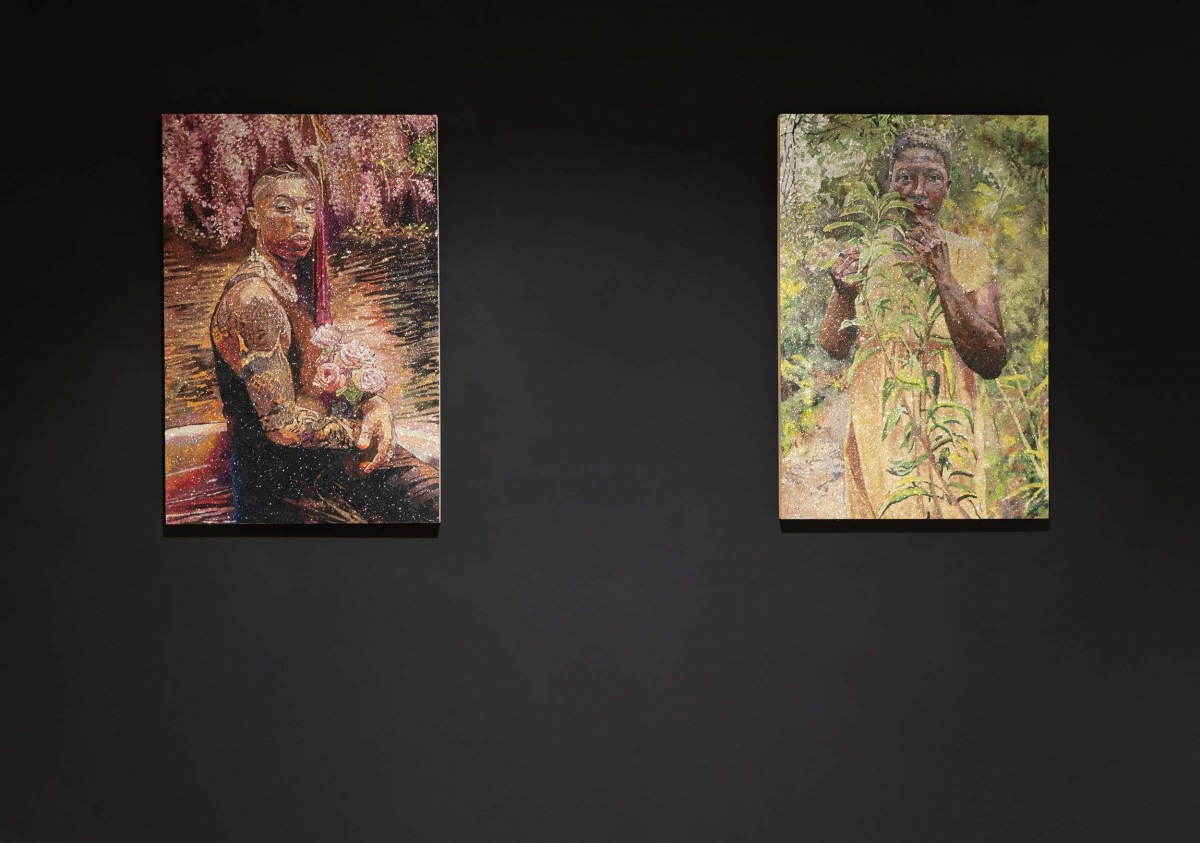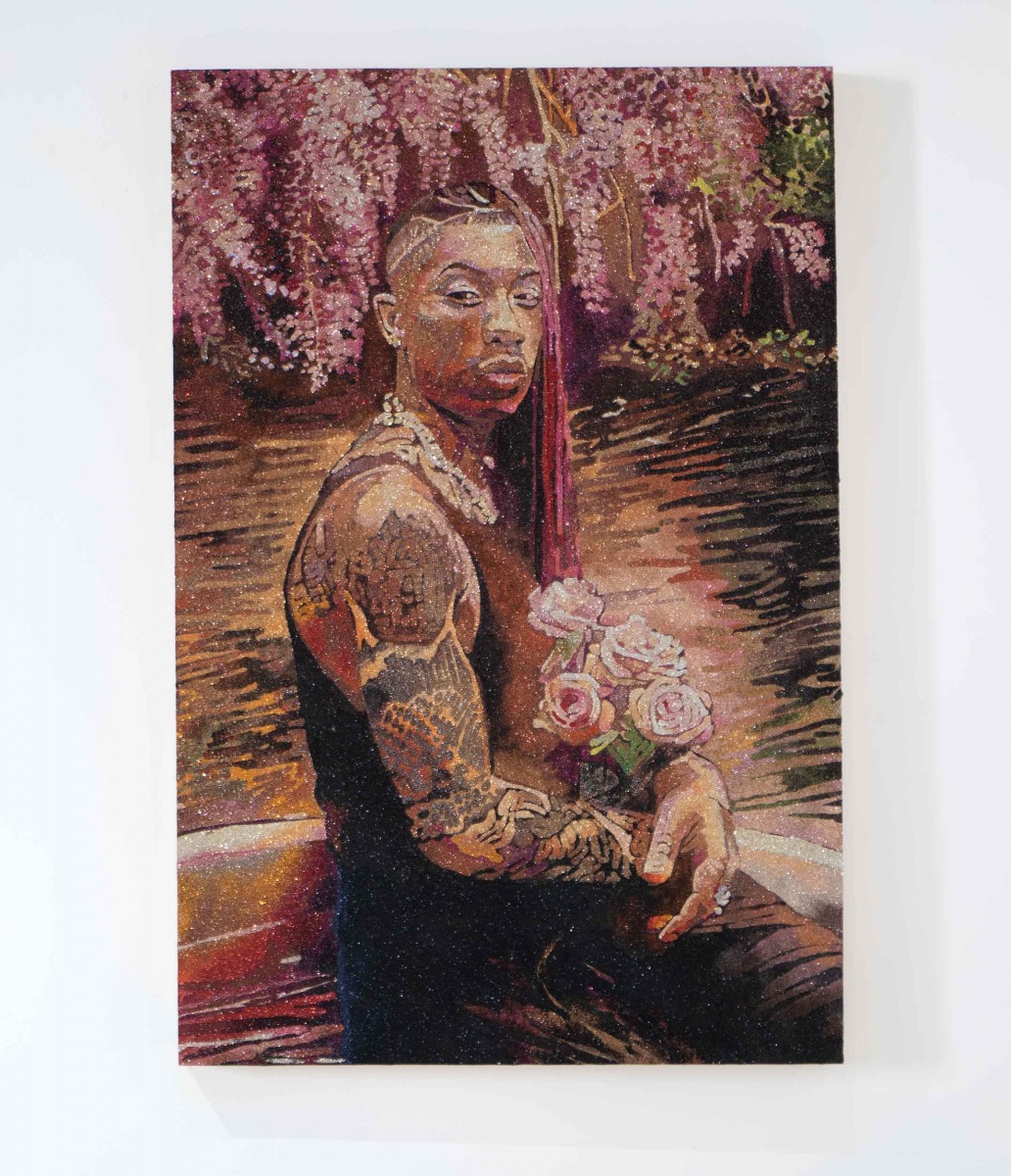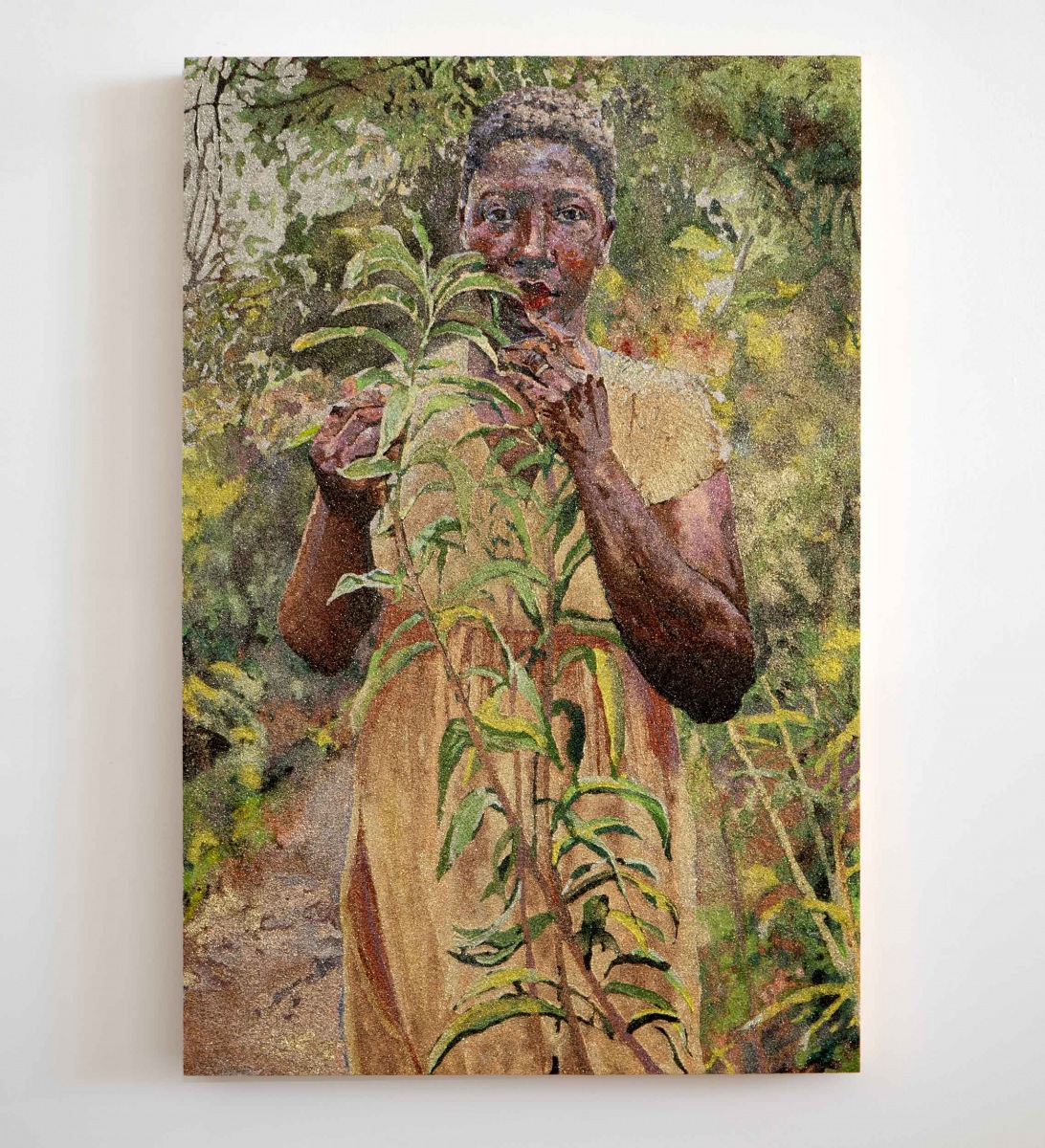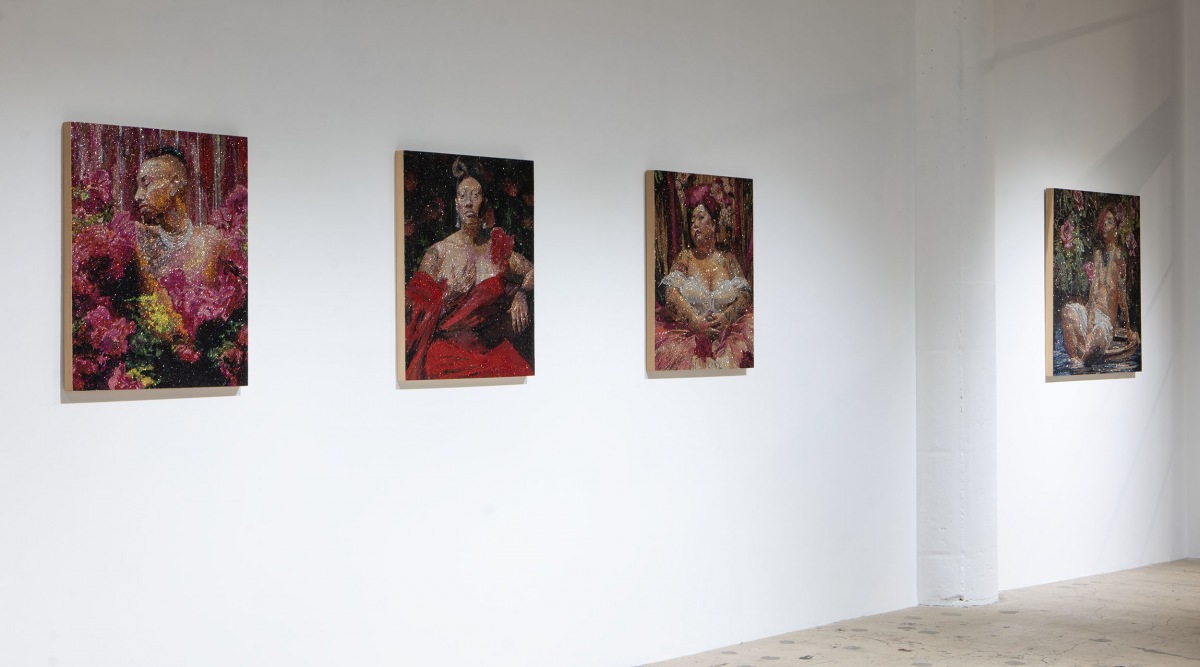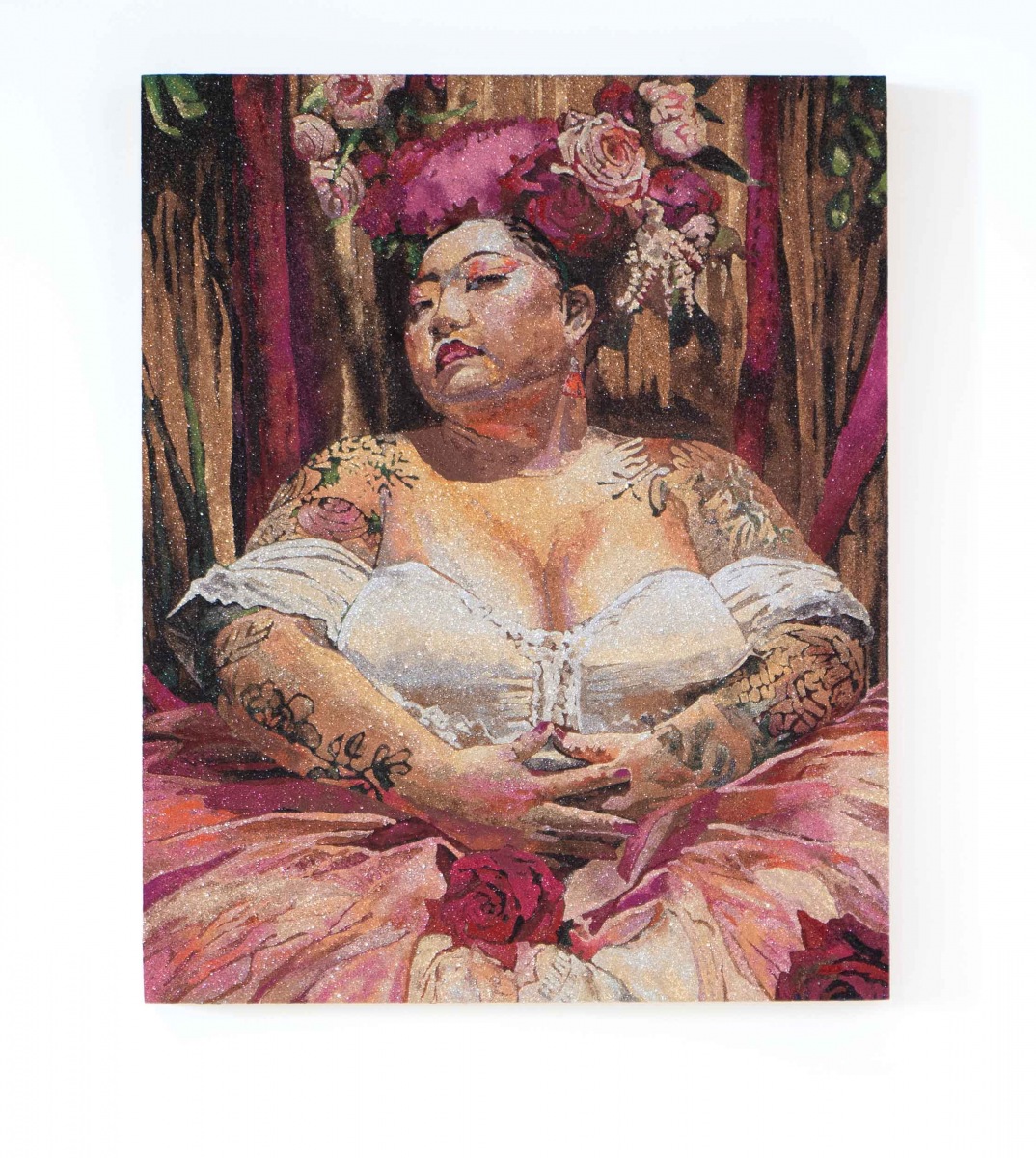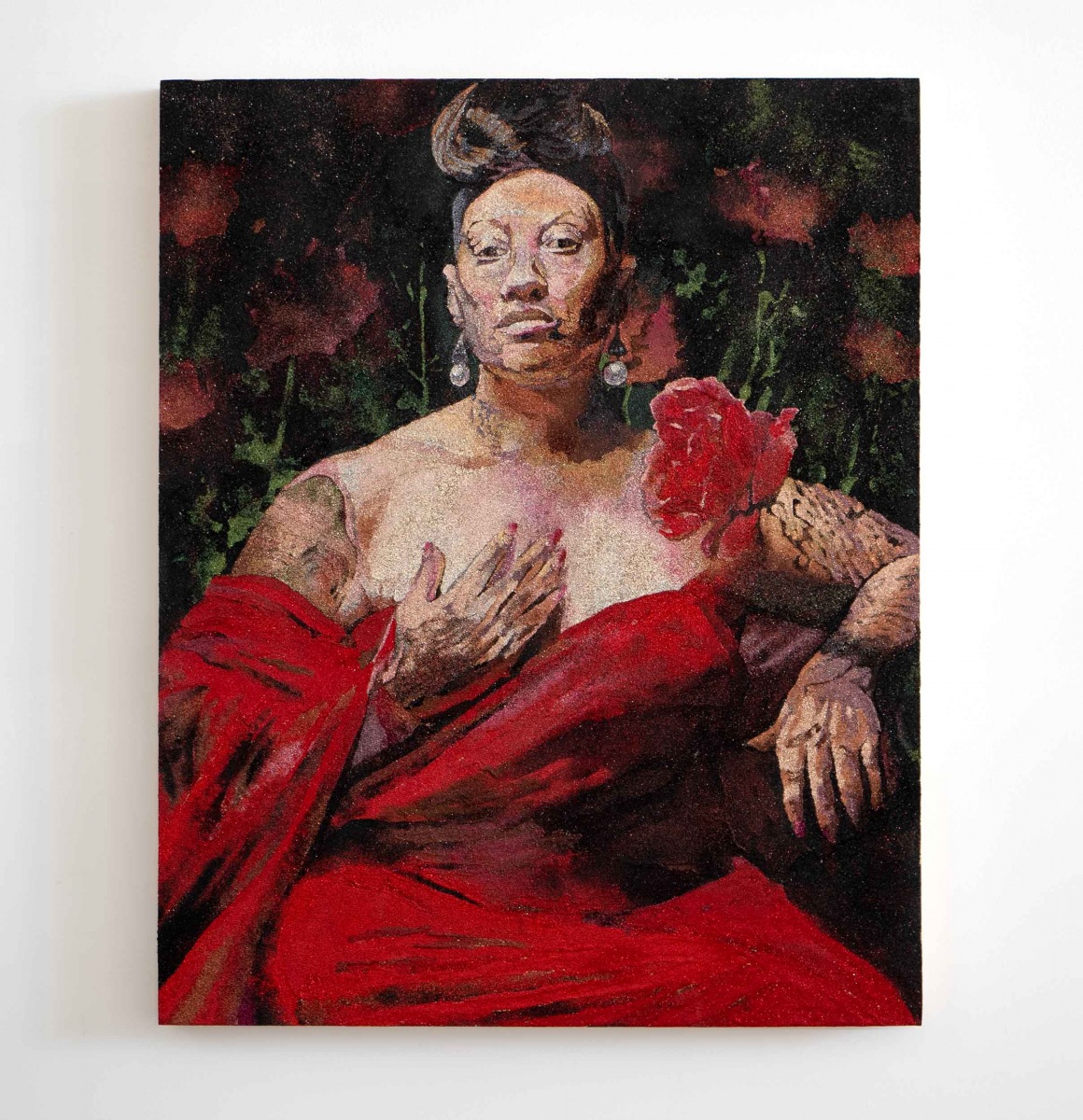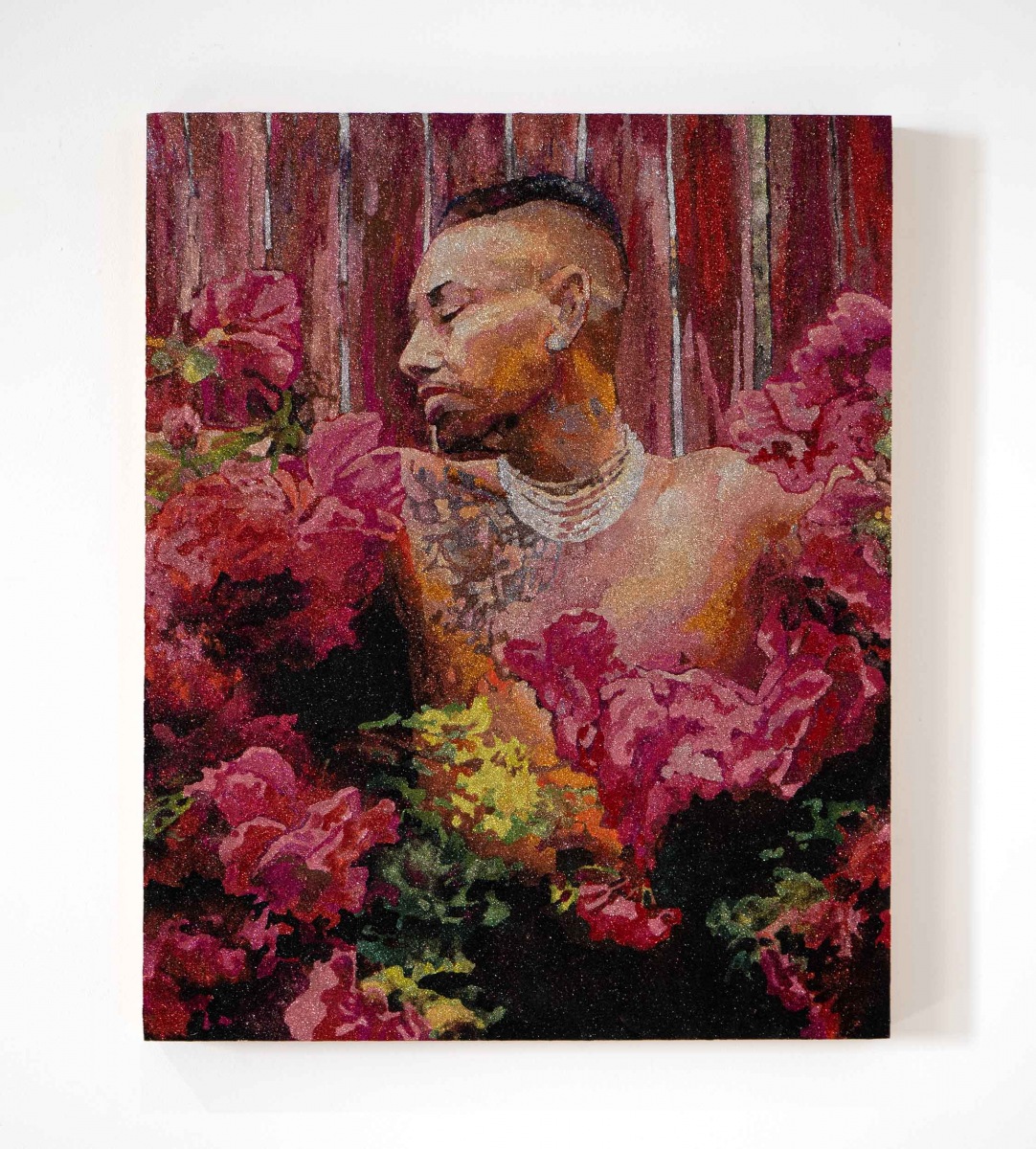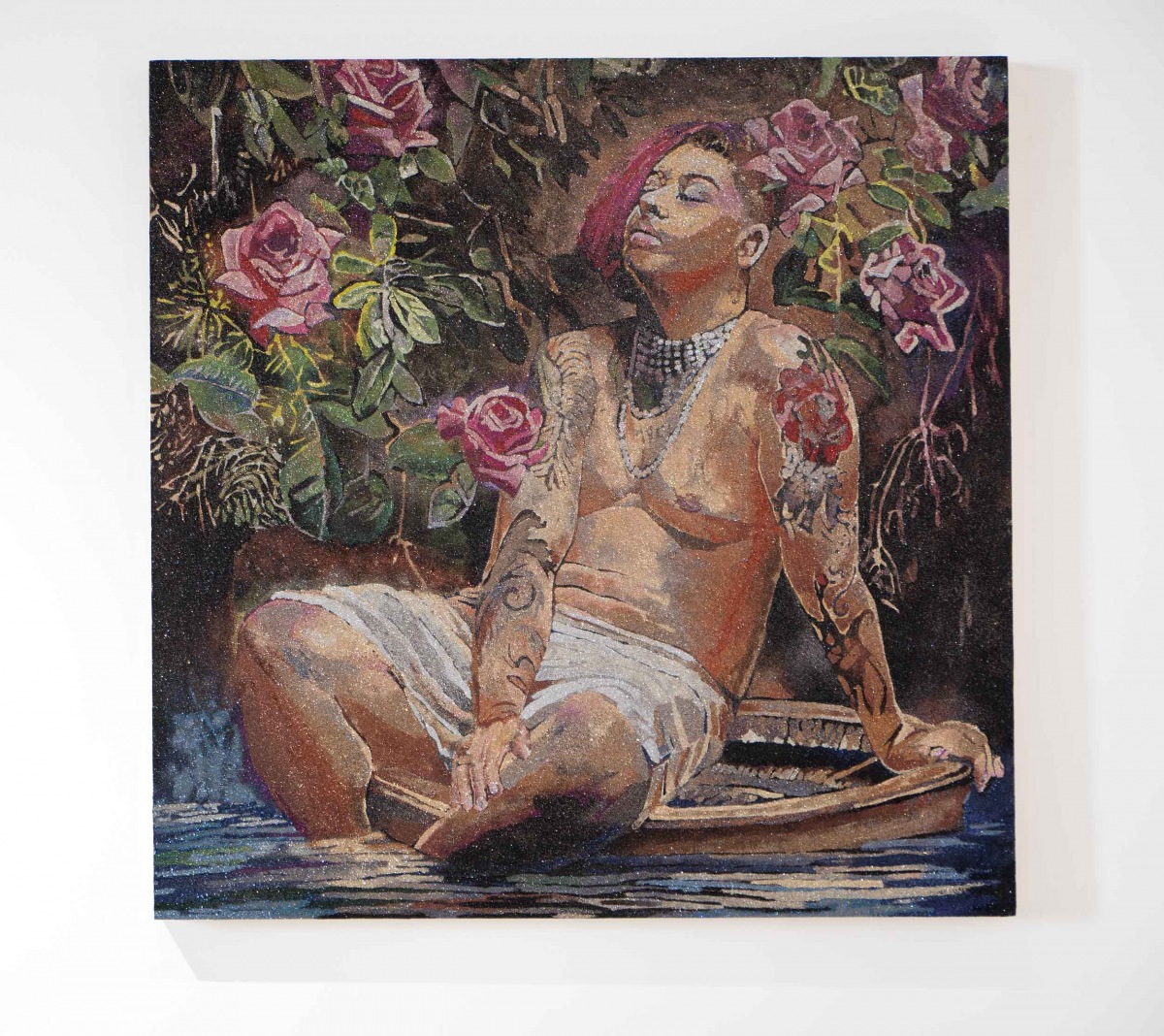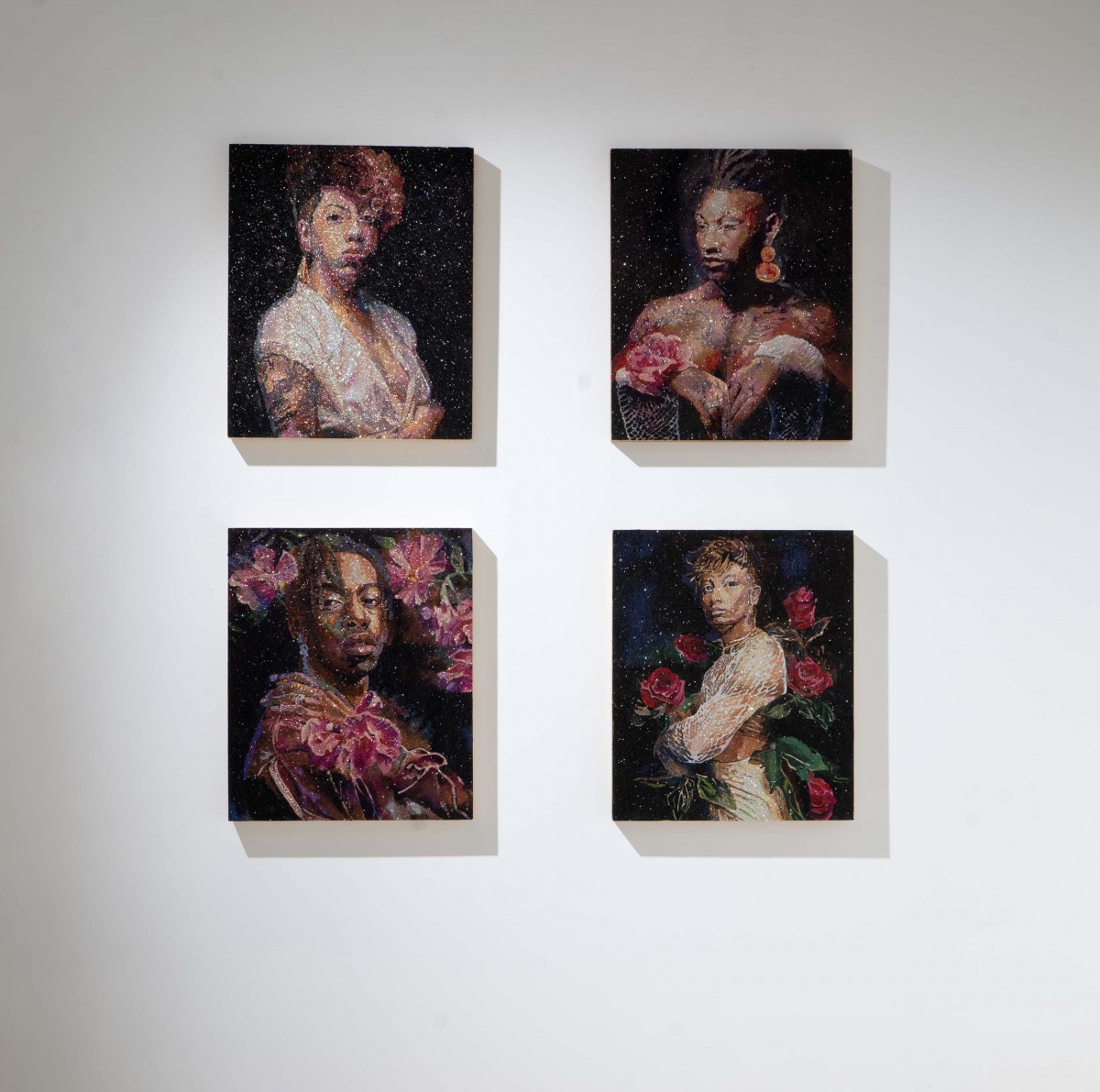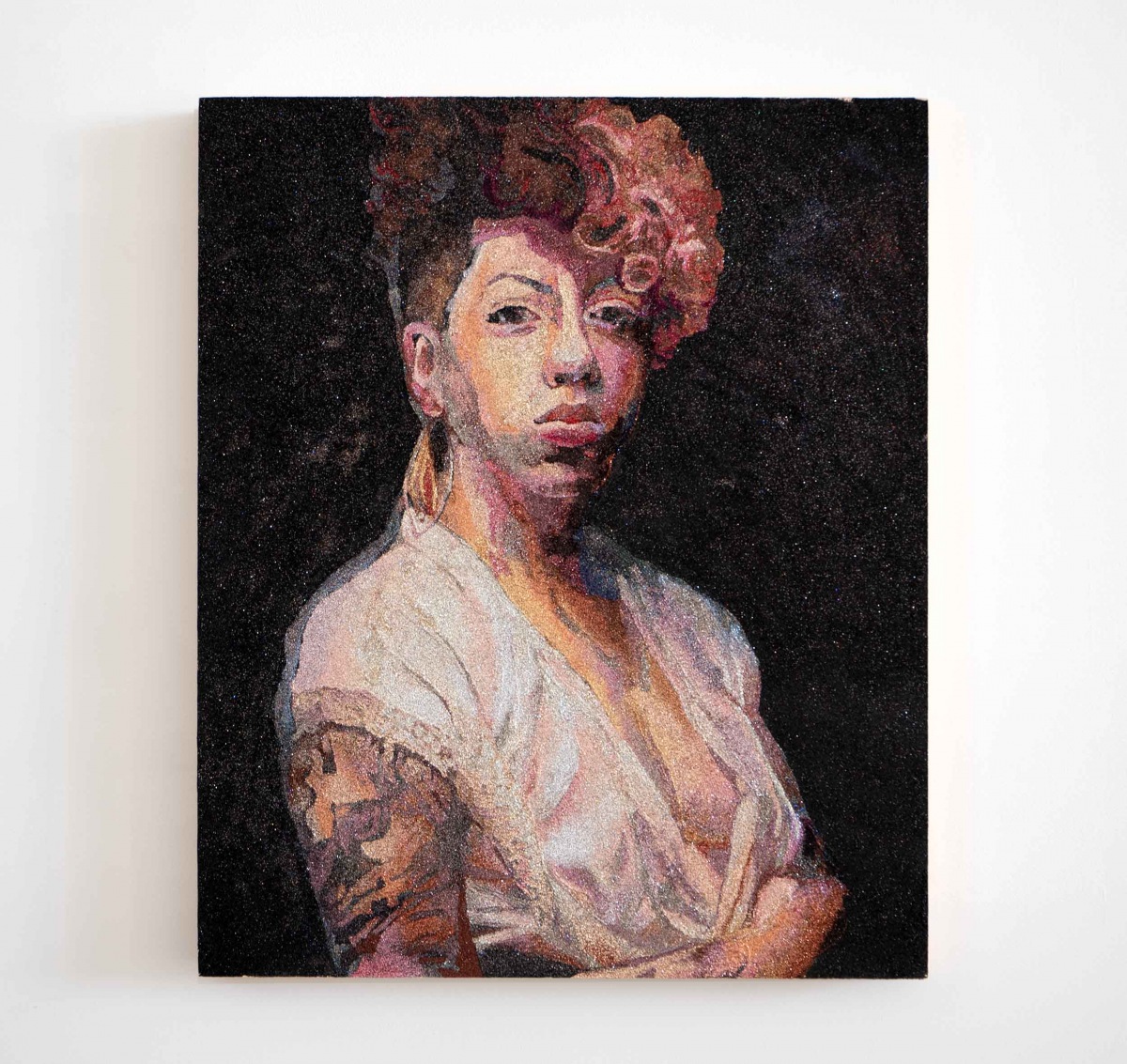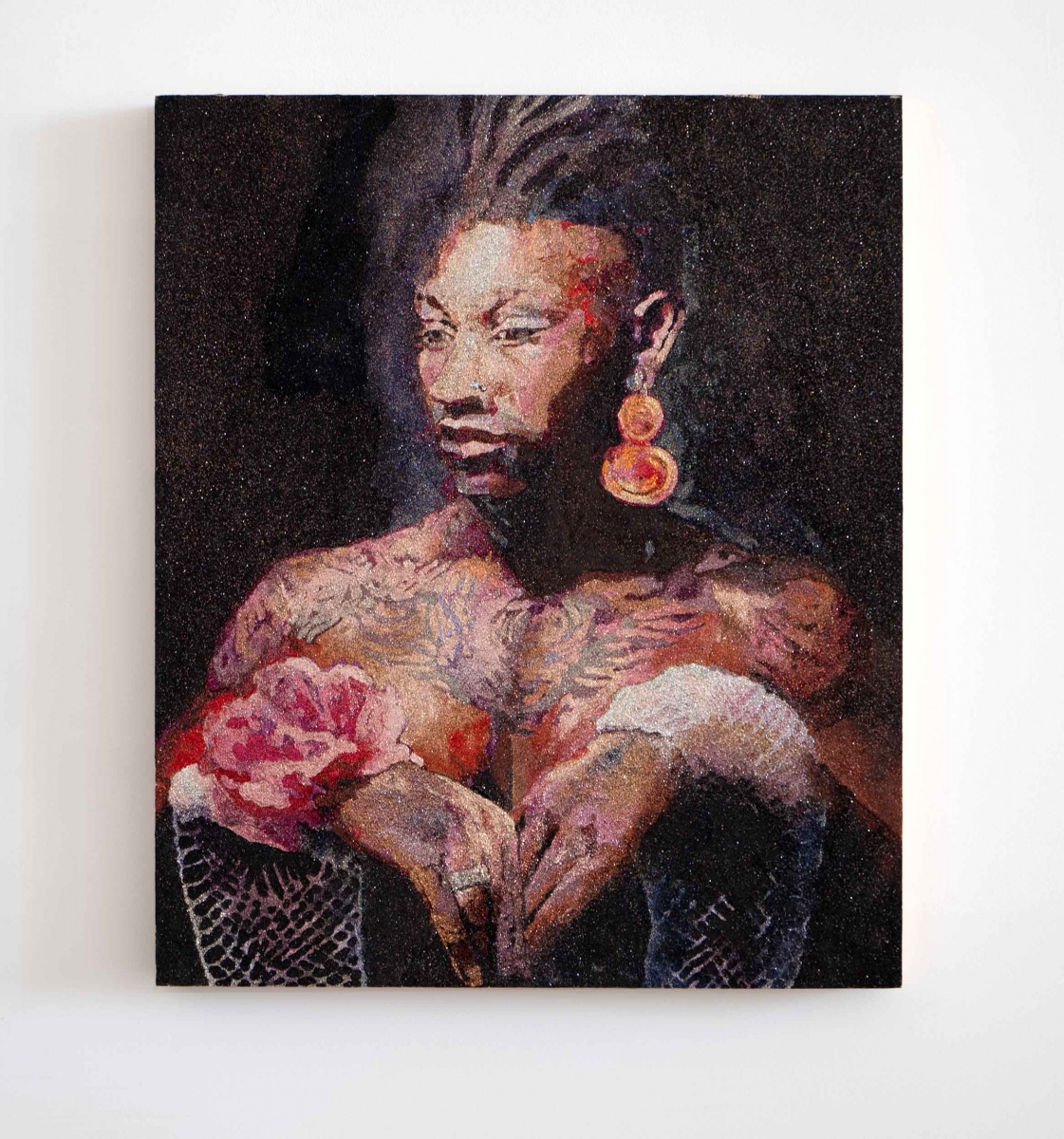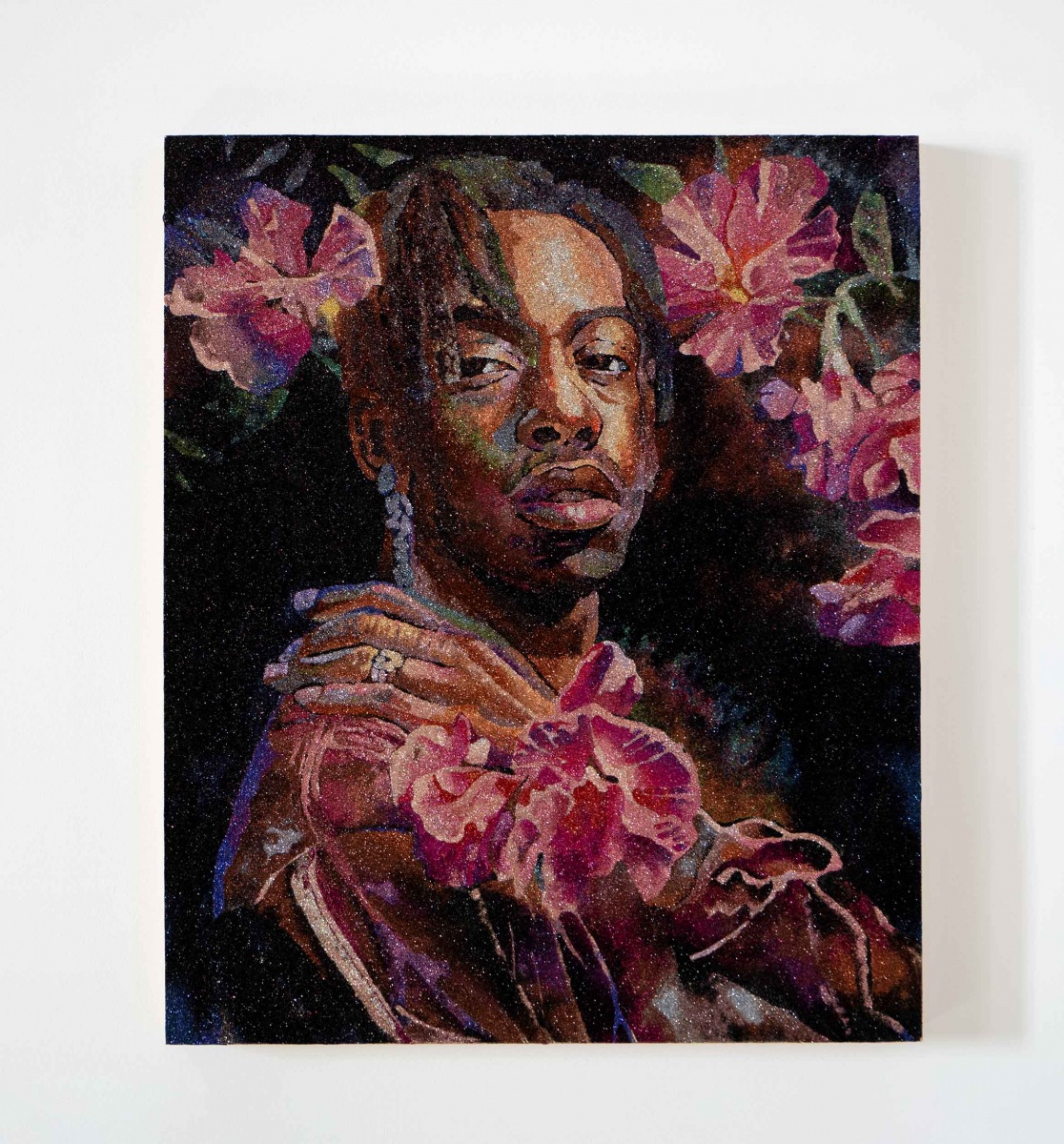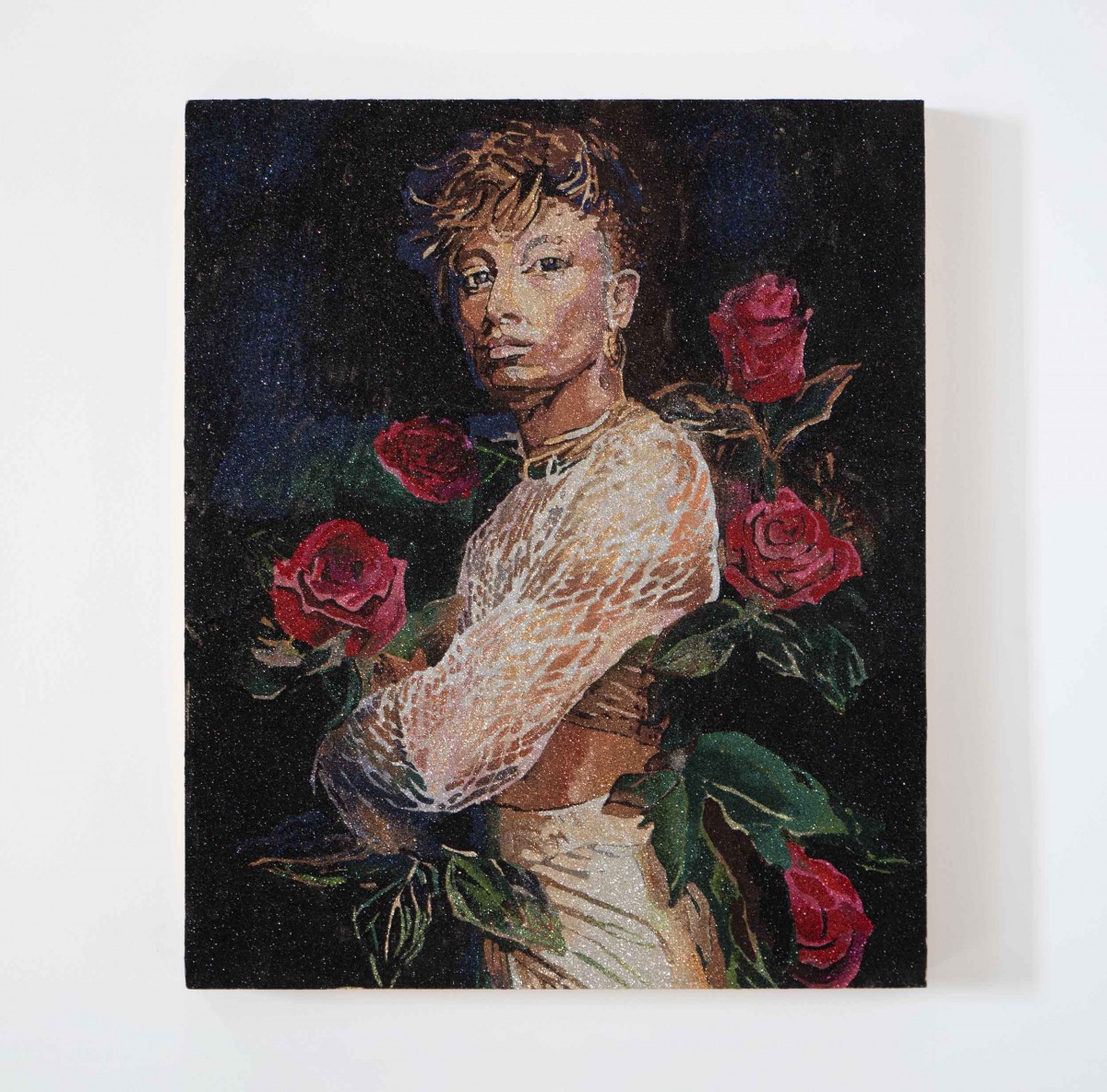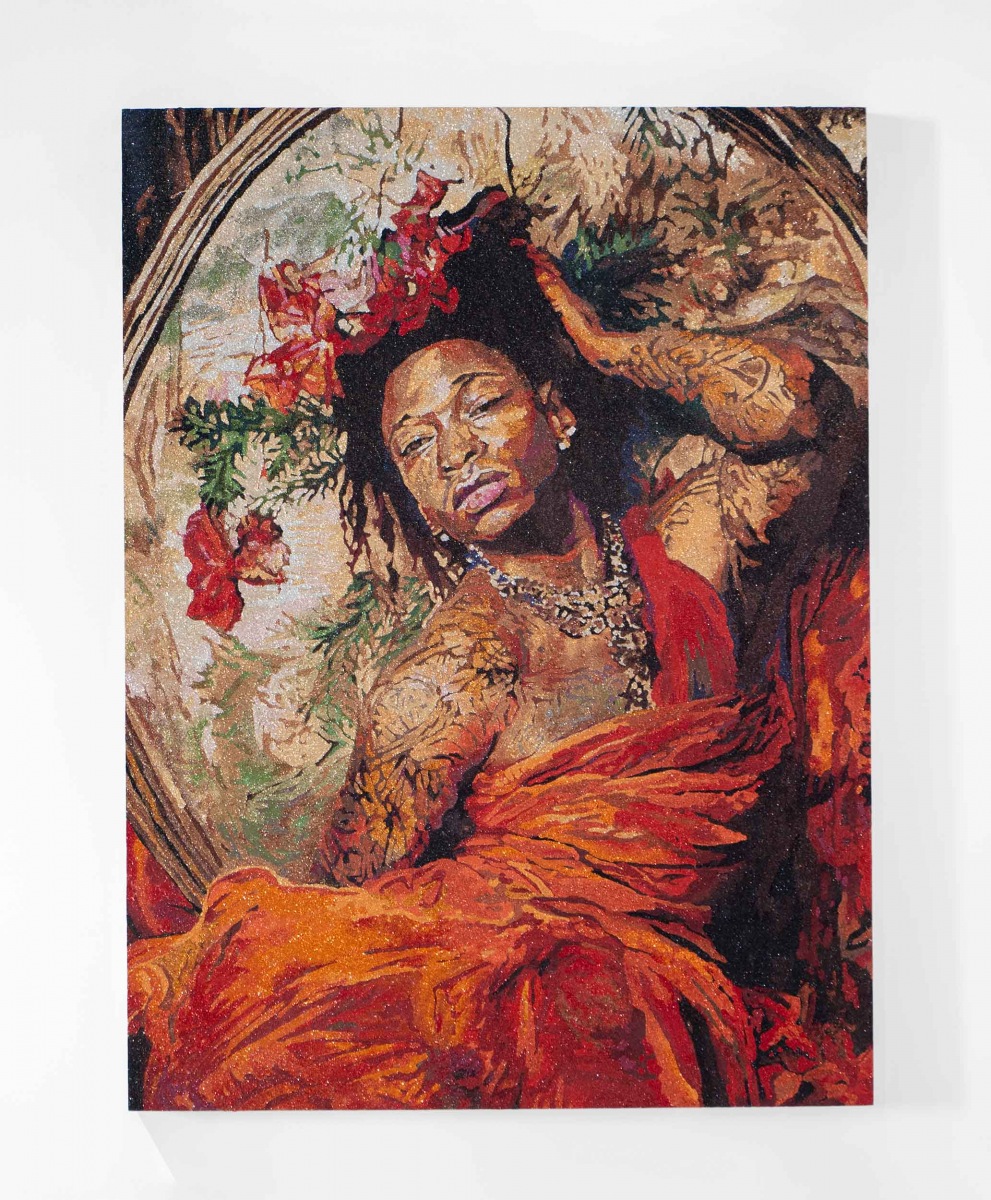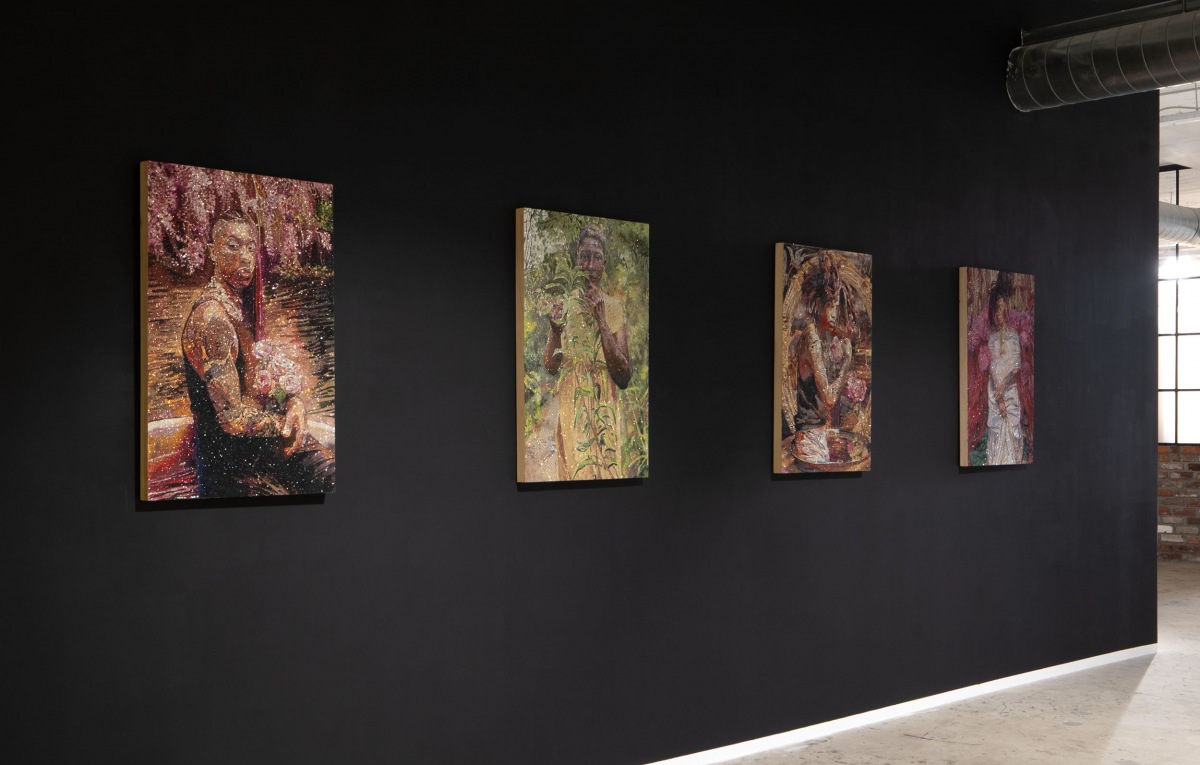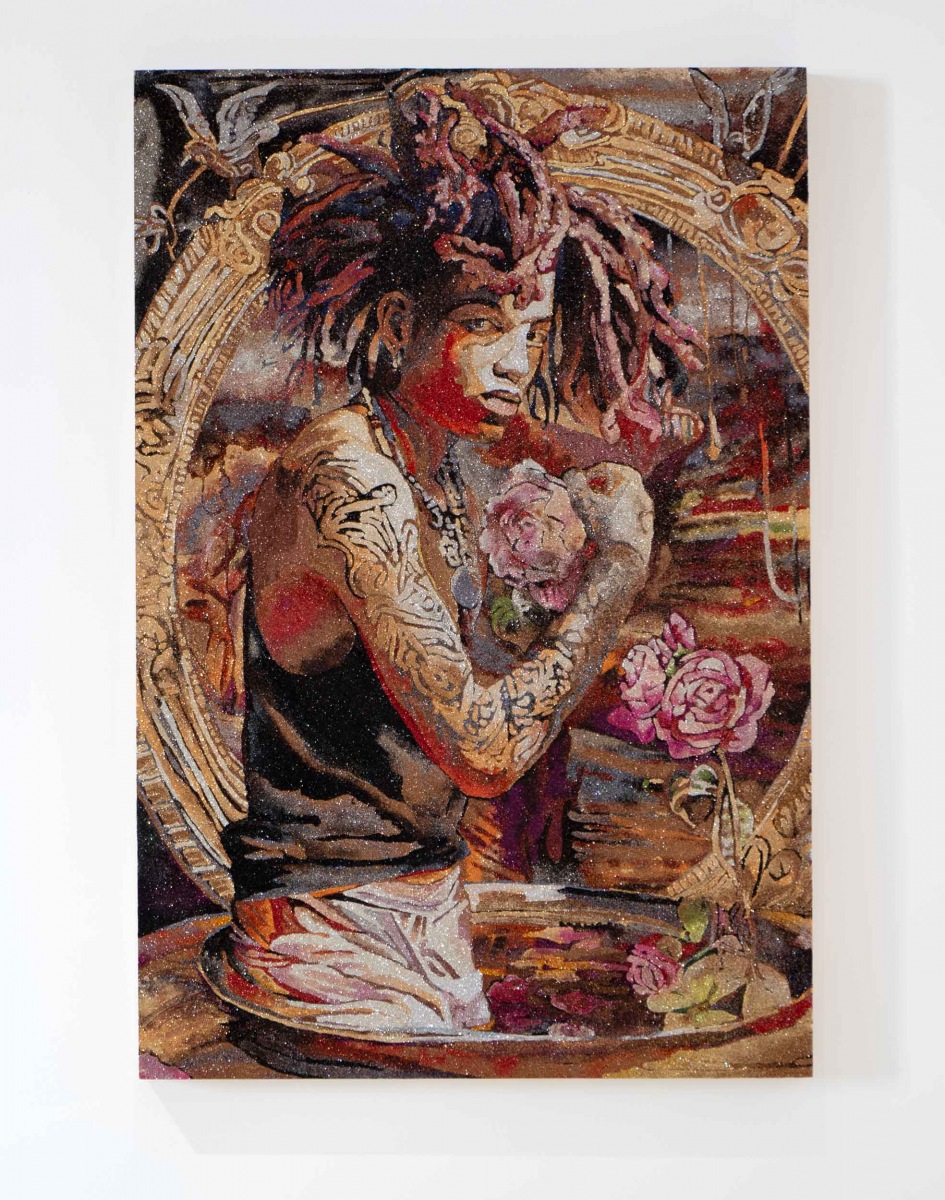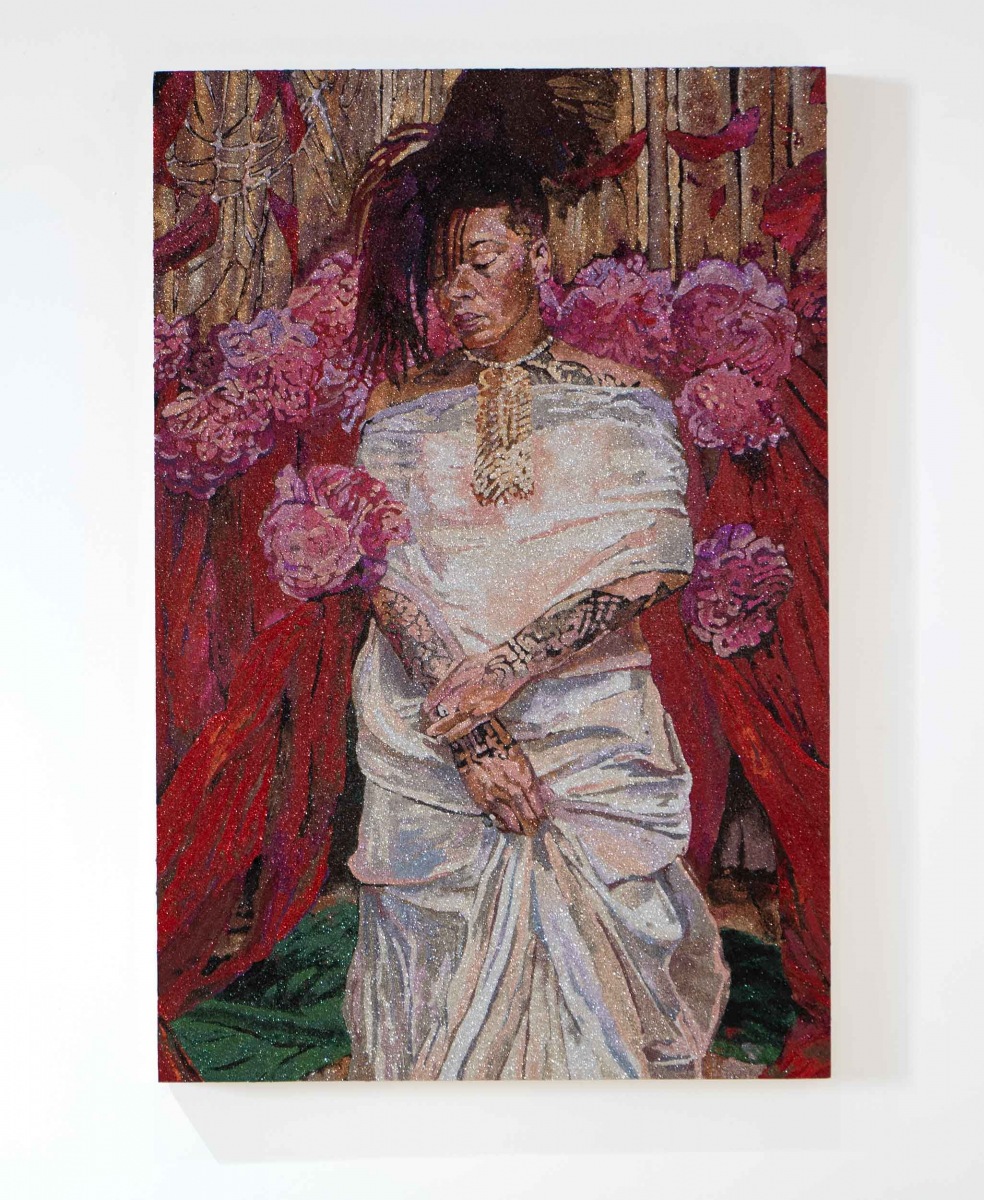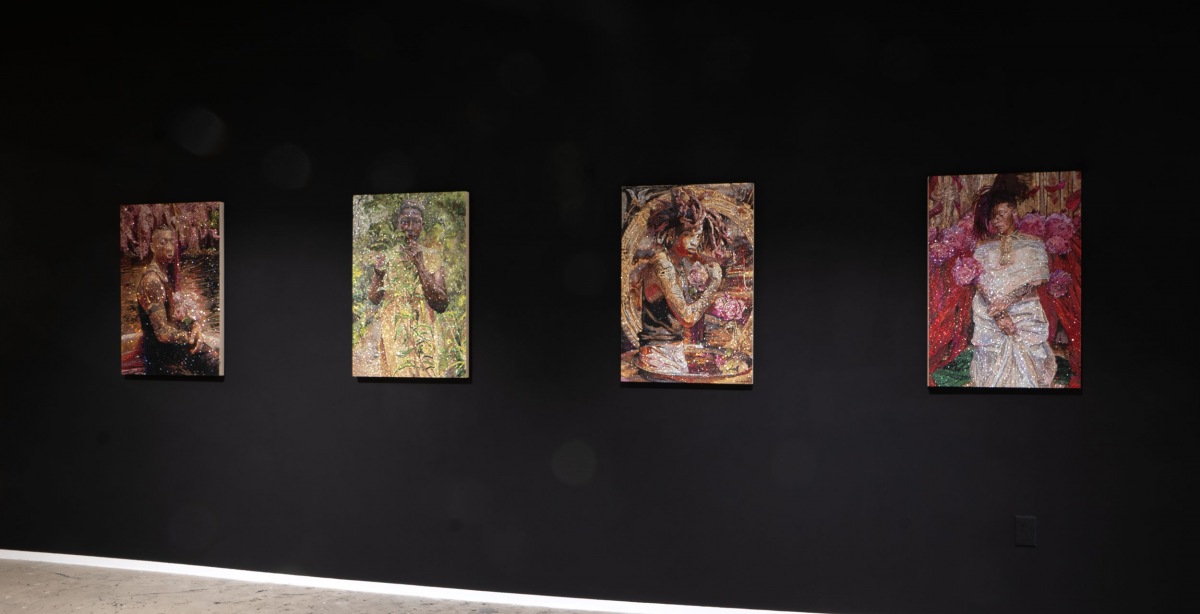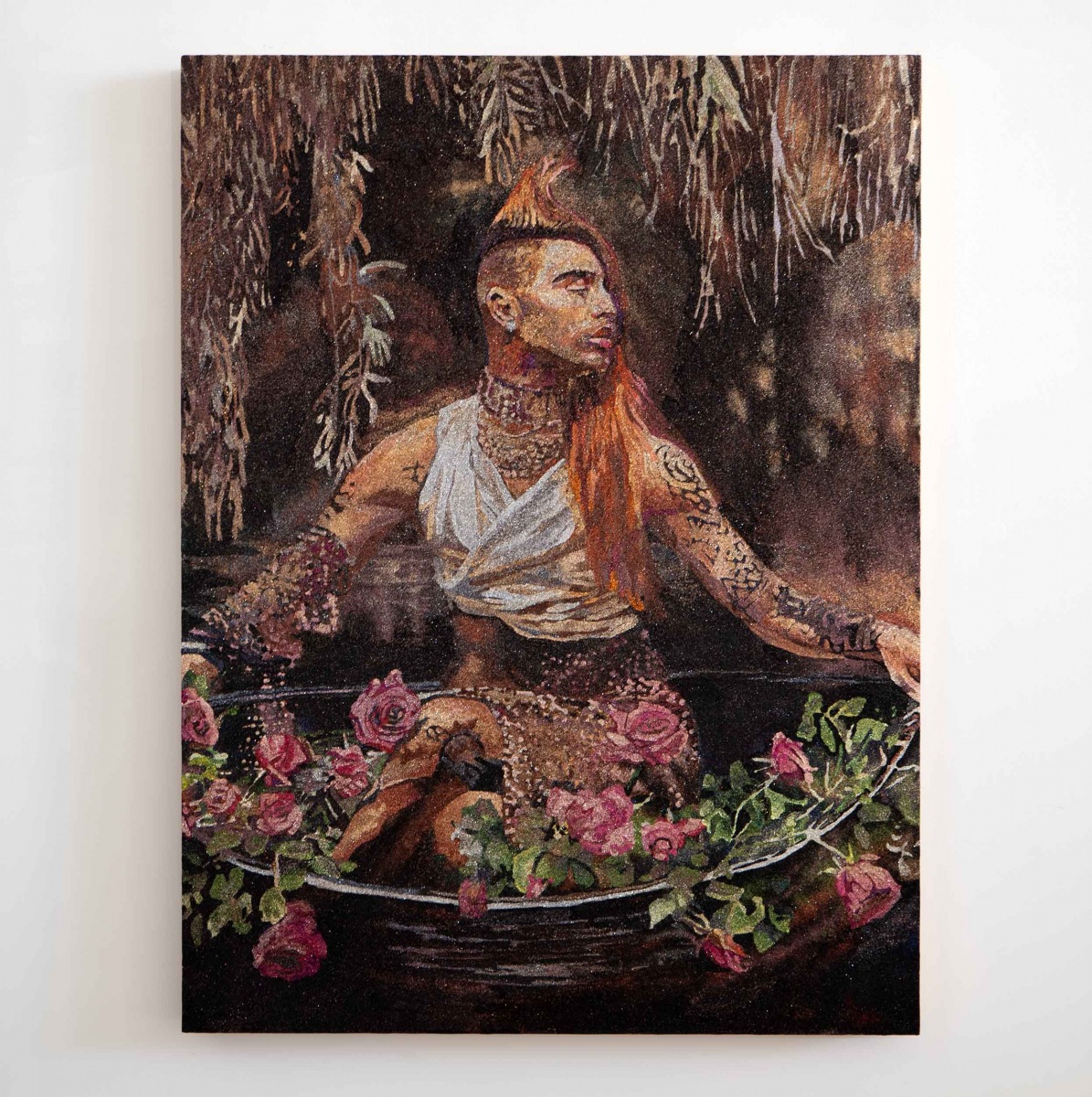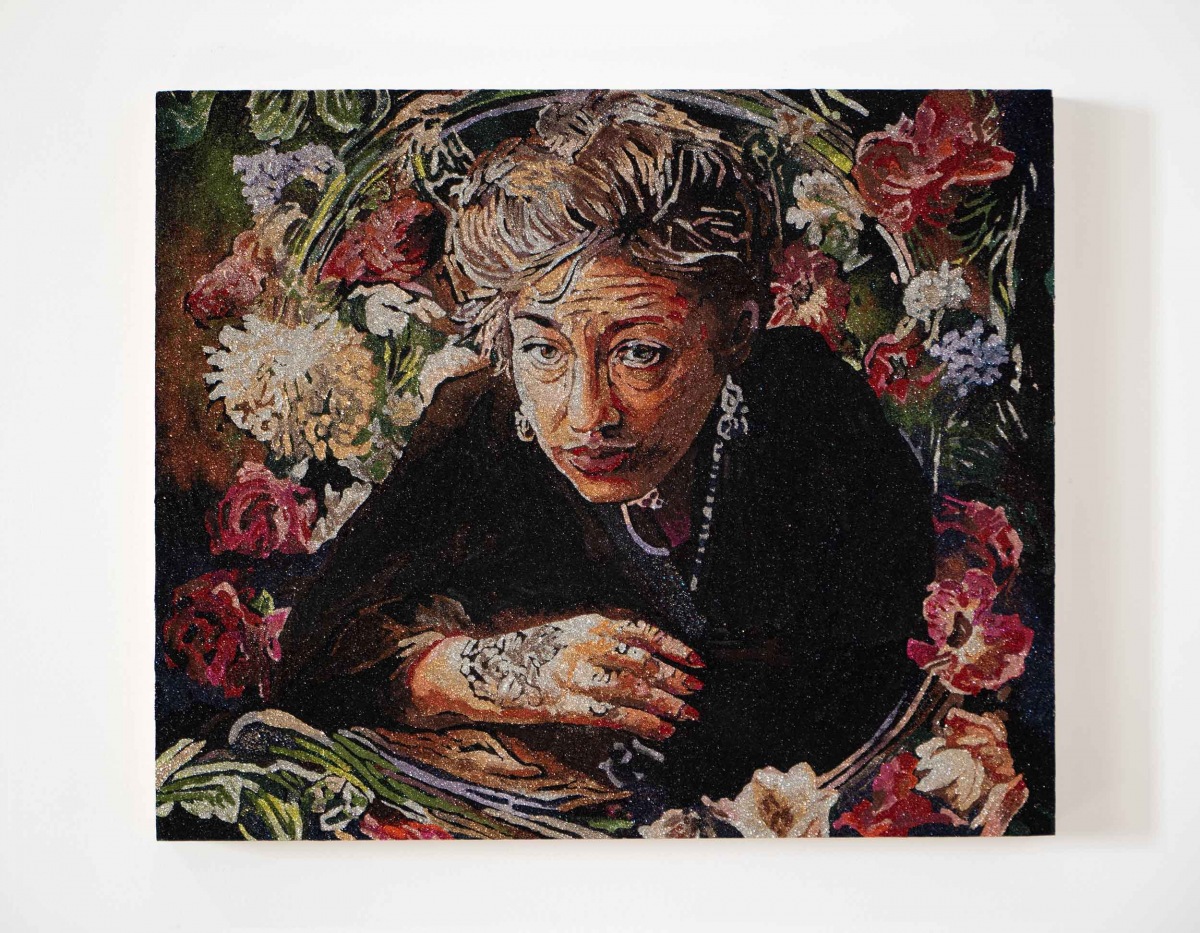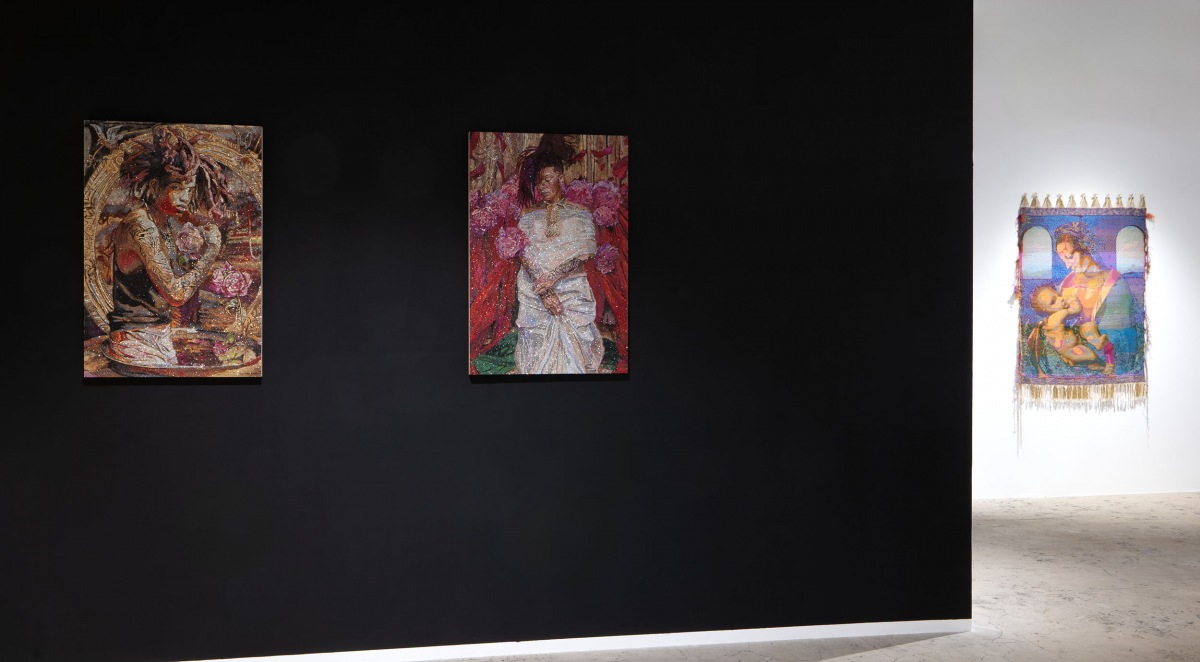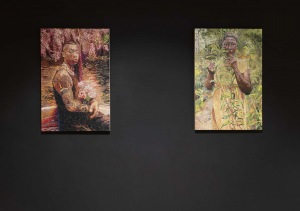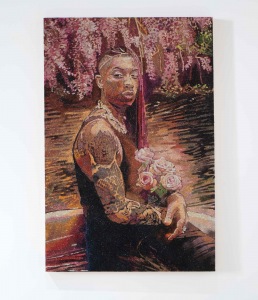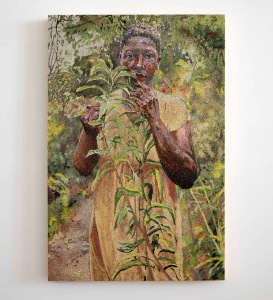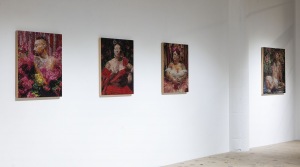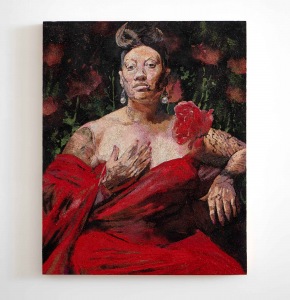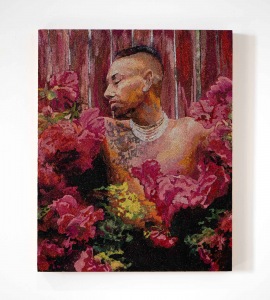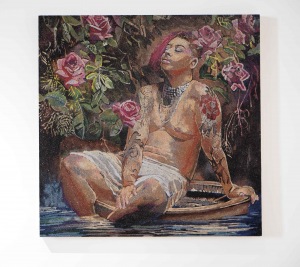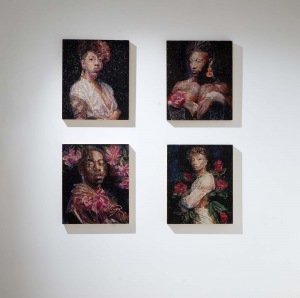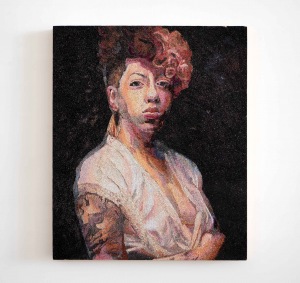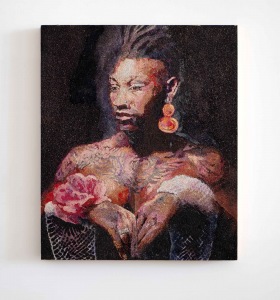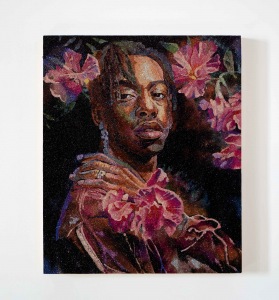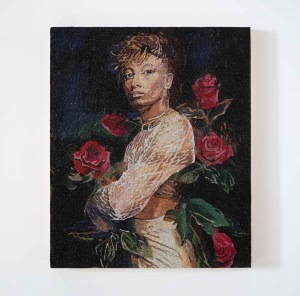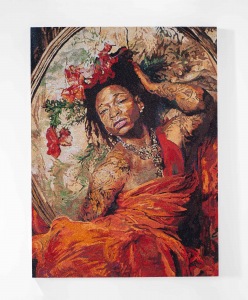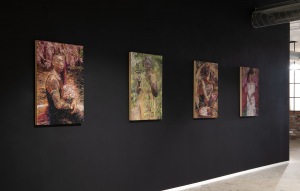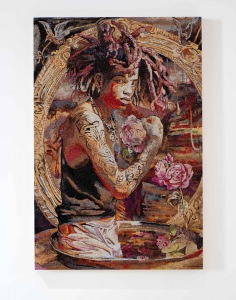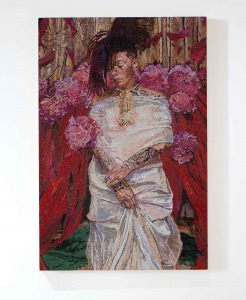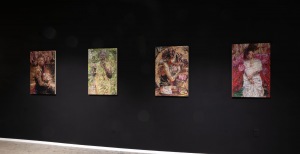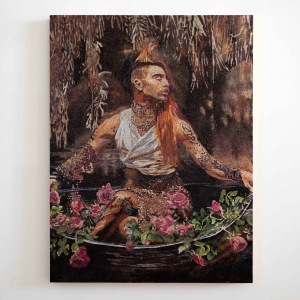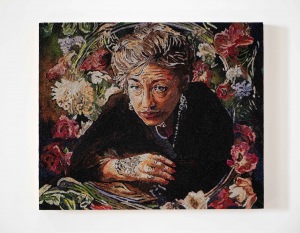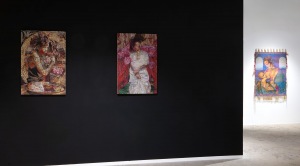Work
Press Release

Jamie Vasta | House of Roses
Exhibition Dates: November 1 – December 13, 2025
Reception for the Artist: Saturday, November 1st from 3 – 5:30pm
Event: Saturday, November 1 at 2:00 pm
In Conversation: The Weaving of an Icon – Recasting Art History with John Paul Morabito & Jamie Vasta
It’s a pleasure to present our upcoming solo exhibitions of John Paul Morabito—Our Lady of the Bathhouse and Jamie Vasta—House of Roses. The pairing of their one-person exhibitions provides the viewer an opportunity to delve into each artists’ remediation of art history through their respective media as they subvert treasured iconic paintings. Using nontraditional materials (Jamie Vasta, glitter and glue; John Paul Morabito, weaving and beads), they redress classical imagery with the aim of empowering those removed from the annals of art history.
Ballroom culture as imagined through 19th-century Pre-Raphaelite paintings is front and center in Jamie Vasta’s exhibition, House of Roses, a celebration of the shimmering, diverse expressions of queer identity. The composite glitter portraits draw inspiration from the opulence, bearing, and metaphor found in Pre-Raphaelite paintings. Rousing in lush outdoor environs and restaged with queer identities in full bloom, Vasta’s ficitve family are gorgeous, tattooed, costumed, commanding and heralded by community—they refuse the lassitudes of erasure and closeted thinking.
As a queer youth growing up in Rochester, New York, Vasta found hope and inspiration in Paris Is Burning—a film that elevates queerness as jubilant, communal, and fierce. Vasta’s imaginary family portraits in House of Roses pay homage to and expand in portraiture the legacy of Black and Latinx communities who built ballroom as a site of chosen family, safety, resilience, and performance, enshrining the courage and intention of their vision as well as the limitless diversity of queer experience.
Known for her contemporary figurative “paintings” made entirely of bombastic bits of glitter and a little glue, Vasta reimagines art history with a queer lens. In her first exhibition Mustn’t in 2007, Vasta reframed Angela Carter’s feminist fairy tales depicting a mystical landscape where women with supernatural powers cavort in deadly play. Vasta’s second exhibition reflects the trophy portrait in glitter, this time with internet composites of adolescent females posed with their kill. Vasta then presented After Caravaggio – a contemporary reframing of Michelangelo Merisi da Caravaggio’s historic paintings where she posed her coterie of friends and colleagues with contemporary props, turning gender and context on end. After the Hudson River School positioned Vasta’s glitter on wood landscapes in the traditions of 19th century landscape painting. Now Vasta turns to the sensorial visuals of the Pre-Raphaelites in House of Roses, a celebration of trans, nonbinary, and genderfluid as icons of beauty, sensuality and self-possession as much at home in the natural world as voguing in the ballroom. Flowing drapery in luminous glitter mirror Vasta’s operatic revelry and imposing gravity. A Vision of Fiammetta, after Rossetti, is almost ambrosial, a stately genderfluid portrait, obliquely referencing the original painting by Dante Gabriel Rossetti (1898). Vasta’s Vision of Fiammetta strikes a direct, unyielding gaze, embraced by exquisite red roses in a deep verdant garden.
The melodrama of this series is a siren call to Vasta, whose imagination is fueled by the beguiling amplification glitter delivers. I recommend you don those rose-tinted glasses and plunge into Queer splendor with House of Roses!
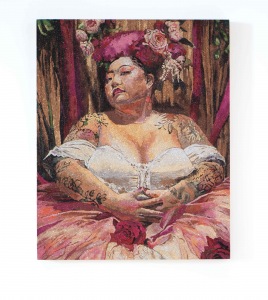
The subjects of my paintings are a diverse group of tattooed, genderfluid individuals who defy traditional notions of beauty and representation. By positioning these figures as the focal point of my reinterpretation of Pre-Raphaelite imagery, I challenge the historical tropes that have often sidelined those who fall outside normative definitions of gender and beauty. The lush floral motifs represent not just the natural world but also the flourishing of diverse identities and experiences. They serve as a reminder of the strength found in community and the importance of nurturing oneself and others.
– Jamie Vasta
Jamie Vasta received her MFA from the California College of Arts in 2007. Her work has been reviewed in Artillery, Art in America, Artforum, art LTD, Modern Art Obsession, The Boston Globe, The New York Times, SF Weekly, and The Bay Guardian. Vasta is included in prestigious public and private collections, including the Berkeley Art Museum and Pacific Film Archive, Arizona State University, and the Crocker Art Museum, Sacramento.
